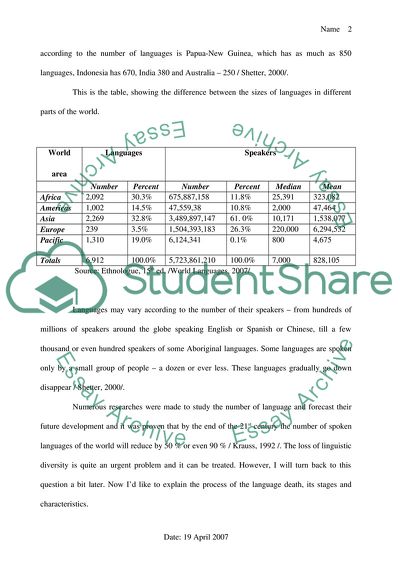Cite this document
(Causes and Consequences of the Notion of Language Death Coursework, n.d.)
Causes and Consequences of the Notion of Language Death Coursework. https://studentshare.org/humanitarian/1707196-explain-the-notion-of-language-death-present-its-causes-and-discuss-its-consequences
Causes and Consequences of the Notion of Language Death Coursework. https://studentshare.org/humanitarian/1707196-explain-the-notion-of-language-death-present-its-causes-and-discuss-its-consequences
(Causes and Consequences of the Notion of Language Death Coursework)
Causes and Consequences of the Notion of Language Death Coursework. https://studentshare.org/humanitarian/1707196-explain-the-notion-of-language-death-present-its-causes-and-discuss-its-consequences.
Causes and Consequences of the Notion of Language Death Coursework. https://studentshare.org/humanitarian/1707196-explain-the-notion-of-language-death-present-its-causes-and-discuss-its-consequences.
“Causes and Consequences of the Notion of Language Death Coursework”. https://studentshare.org/humanitarian/1707196-explain-the-notion-of-language-death-present-its-causes-and-discuss-its-consequences.


